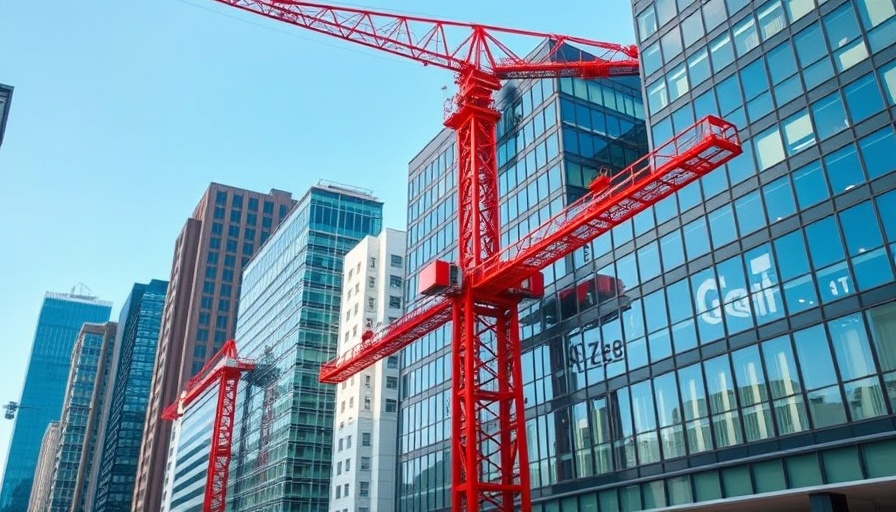
JPMorgan Chase Expands HQ: A Deep Dive into Its San Francisco Move
JPMorgan Chase, the largest bank in the United States, has made headlines with its recent decision to expand its headquarters in San Francisco. Despite this growth, the bank's overall office space is shrinking, reflecting a broader trend in corporate real estate post-pandemic. Under CEO Jamie Dimon's leadership, JPMorgan is adapting to changes in workplace culture and urban challenges in the Bay Area.
A Modern Workspace: What’s New at 560 Mission St.
The expansion will include an additional 65,000 square feet in the 31-story tower at 560 Mission St., aiming to accommodate around 1,600 employees. Renderings of the space reveal a modern aesthetic, featuring amenities such as a coffee bar, a flexible work club, and a fitness center complete with a yoga studio. While this enhancement positions JPMorgan as a competitive employer, it raises questions about the reduction of workspace at its previous location. By moving into this state-of-the-art facility, the bank is signaling a dedication to fostering a collaborative and healthy work environment.
The Shift in San Francisco's Corporate Landscape
Interestingly, while JPMorgan is expanding its footprint, it has significantly downsized its overall office space in San Francisco. The bank boasts plans to maintain just 125,000 square feet at One Front Street, a staggering 50% decrease from prior leases at that site, which previously served as the headquarters for First Republic Bank before its acquisition. This duality of expansion and reduction echoes a general trend among businesses re-evaluating their office needs in light of remote work flexibility. Many companies now see value in smaller, multi-purpose spaces rather than expansive office complexes.
Acquisition of First Republic: A Transformative Event
The acquisition of First Republic Bank post its collapse in 2023 catalyzed a rapid expansion for JPMorgan. This acquisition allowed JPMorgan to increase its presence in Silicon Valley significantly. It reflects the bank’s strategic advantage but also raises inquiries about workforce stability as it restructures its operational footprint to align with post-pandemic realities.
A Balancing Act: The Challenges of Urban Operations
As JPMorgan increases its San Francisco presence, it must also navigate the city’s challenging urban environment. Downtown San Francisco has become a point of contention, with various companies expressing concerns regarding safety and cleanliness in light of rampant homelessness and deteriorating street conditions. CEO Jamie Dimon even publicly criticized these issues during a recent television appearance, highlighting the difficulties companies face in maintaining operations in urban cores amidst societal changes.
Reversing Trends: Remote Work and Return-to-Office Mandates
This past year has seen a clear shift towards more traditional workplace structures, as evidenced by Dimon's directive for employees to return to the office five days a week. This strategy suggests an intent to mend company culture and collaboration that some have deemed lost during the remote work era. However, this stance has not been without backlash, signaling a potential conflict between employee preferences for flexibility and corporate directives focused on productivity and cohesion.
Community Engagement: Focus on Philanthropy
In addition to its corporate efforts, JPMorgan has committed to donating $3.8 million in philanthropic support aimed at revitalizing San Francisco's commercial landscape. This includes initiatives to fill vacant retail spaces in the popular Union Square area, suggesting that the bank is not merely expanding its business but also investing in the community's economic resurgence.
Future Predictions: How Will Businesses Evolve?
The future remains uncertain for businesses in urban centers like San Francisco. As trends shift with the post-pandemic workplace culture, firms like JPMorgan Chase are exploring how best to create spaces that cater to employee well-being while managing economic realities. Enhanced office environments may become a norm, with businesses required to balance functional requirements with employee satisfaction.
Conclusion: Embracing Change and Looking Ahead
As JPMorgan Chase navigates these transitions, its actions will not only shape its own future but may also influence the broader corporate landscape in San Francisco. The expansion of its headquarters amid a backdrop of reduced overall office space underlines a significant moment in the evolution of workplace expectations. For those watching the Bay Area news, JPMorgan Chase’s moves will be essential to understanding the ongoing transformation of the city's business environment. The message is clear: even amidst challenges, big corporations are committed to adapting and engaging with their communities. As this story develops, it serves as a critical reminder to keep an eye on the evolving dynamics of corporate real estate in urban settings.
 Add Row
Add Row  Add
Add 




 Add Row
Add Row  Add
Add 

Write A Comment